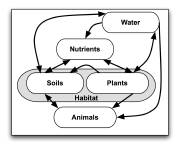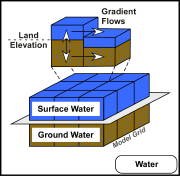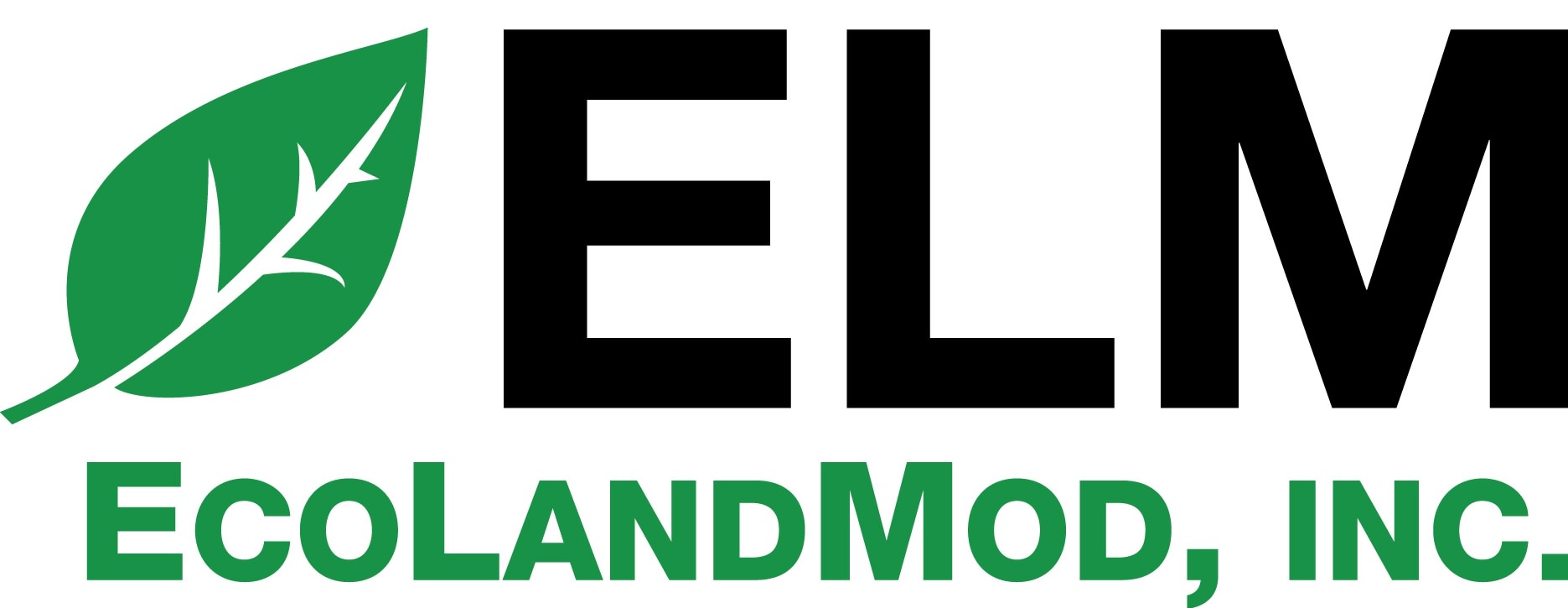![]() Background |
Models |
Projects |
Publications |
People |
News
Background |
Models |
Projects |
Publications |
People |
News
![]() Background |
Models |
Projects |
Publications |
People |
News
Background |
Models |
Projects |
Publications |
People |
News
Introduction
Conceptual model: South Florida
Wetland ecological models
Generic modeling framework
Ecological models of wetlands are a diverse assemblage of tools for better understanding the wide range of wetland types distributed throughout the globe. However, these models generally share a common characteristic: they are conceptual and quantitative tools that consider the responses of some part of the ecosystem to varying magnitudes and frequencies of flooding. For some purposes, this may be as simple as an assessment of the suitability of specific ranges of water levels for different biological communities.
 More complex ecological modeling tools may investigate nutrient dynamics with changing surface and ground water flows.
Further details in an 'integrated' model may link those nutrients to plants and animals within a wetland, as shown in the General Ecosystem Model depicted here.
More complex ecological modeling tools may investigate nutrient dynamics with changing surface and ground water flows.
Further details in an 'integrated' model may link those nutrients to plants and animals within a wetland, as shown in the General Ecosystem Model depicted here.
An integrated simulation model can take on a range of definitions. Largely dependent on the specific objectives, this may involve the interplay among physical, chemical, biological, and socioeconomic sciences.
Relative to a project's goals, it is desirable to determine the minimum set of ecosystem properties that will interact to lead to long term trajectories of wetland structure and function. Understanding the fundamental physical, chemical, and biological interactions - at some minimal level - becomes a goal for ecological simulations of wetland dynamics in this context.
'Getting the water right' is a primary consideration in understanding the dynamics of wetlands, and the phrase is a driving principal behind an ambitious restoration effort in the remnants of the vast Everglades wetlands of Florida. Physical hydrology becomes the foundation for most wetland models.
 In one of the more comprehensive spatial frameworks, a 3-dimensional model tracks water flows both above- and below- the land surface, along with horizontal fluxes across space. Regardless of the spatial design, a principal hydrologic characteristic that should be considered is the timing and duration of the surface water flooding or soil saturation.
In one of the more comprehensive spatial frameworks, a 3-dimensional model tracks water flows both above- and below- the land surface, along with horizontal fluxes across space. Regardless of the spatial design, a principal hydrologic characteristic that should be considered is the timing and duration of the surface water flooding or soil saturation.
One of the more common design constraints for wetland ecological models is that of matching space and time scales of the hydrologic and biological processes. Water flows are often modeled with a time resolution of minutes to days, whereas upper trophic level responses of plant and animal communities operate at time scales that are orders of magnitude greater. Thus, the selection of the hydrologic characteristics to drive wetland ecological models can become a crucial factor in the endeavor's scope and objectives.
The fluctuations of the water table above and below the land surface are simply fundamental to the hydrologic component of wetland ecological models.
The 4-page description of Wetland Ecological Models ( 1.5 mb) provides an overview of the Water, Nutrient, Soil, Plant, and Animal components of different types of wetland models.
1.5 mb) provides an overview of the Water, Nutrient, Soil, Plant, and Animal components of different types of wetland models.
See also the Publications link in the main menu above for Everglades Landscape Model examples of integrated Ecological Landscape Models in wetlands.
 EcoLandMod Background
EcoLandMod Background